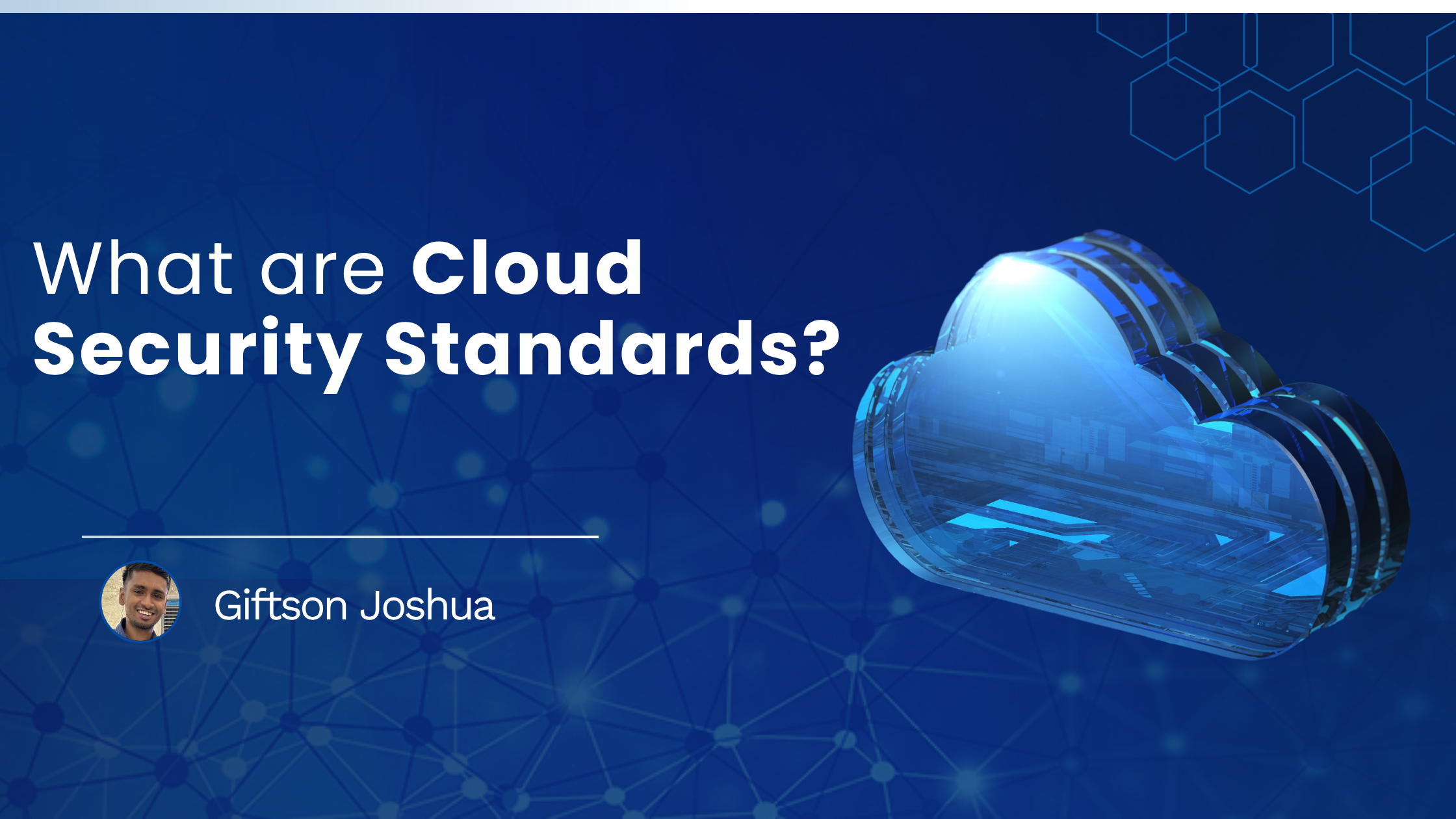Cloud security standards define formalized policies, procedures, and controls designed to protect data, applications, and infrastructure across cloud environments. These standards are developed by regulatory bodies and industry alliances to bring consistency to security expectations across providers and users. Each standard focuses on specific areas such as access controls, encryption requirements, incident response readiness, and auditability.
Misconfigurations, excessive permissions, and inconsistent security practices have made structured compliance frameworks more than a checkbox activity. Without defined benchmarks, security gaps often remain undetected until exploited. Cloud security standards address that gap with measurable controls that help organizations reduce exposure and meet mandatory regulatory obligations.
In the following sections, we will examine the importance of cloud security standards, explore the top standards and frameworks in use today, and discuss how organizations can implement these standards effectively to enhance their cloud security posture.
Why are Cloud Security Standards Important?
Adopting cloud services relocates data and workloads from on-premises environments into third-party infrastructures, removing direct control over physical systems. Migrated assets often span public, private, and hybrid clouds, increasing configuration complexity and widening attack surfaces. According to IBM’s Cost of a Data Breach Report 2024, breaches involving data stored solely in public clouds reached an average cost of USD 5.17 million, and 40 percent of incidents involved multiple environments, emphasizing the difficulty of maintaining visibility and consistency without standardized controls.
Frameworks such as NIST SP 800-53, ISO/IEC 27017, ISO/IEC 27018, and the Cloud Security Alliance STAR program consolidate vendor-agnostic best practices into actionable requirements. Coverage spans identity and access management, encryption mandates, continuous monitoring, and audit readiness. Alignment with these frameworks helps organizations satisfy mandates like GDPR, HIPAA, and PCI DSS, while clarifying audit criteria and reducing ambiguity around technical controls. The CSA STAR program, based on the Cloud Controls Matrix (CCM), provides a public registry of provider attestations that streamlines third-party assessments and promotes transparency in security postures.
Structured benchmarks also accelerate incident response. Predefined control objectives and reporting protocols reduce time to detect and contain breaches, limit operational disruption, and support rapid remediation. Organizations that map processes to established standards gain measurable improvements in resilience and can demonstrate compliance posture to stakeholders without extensive custom assessments.
Top Cloud Security Standards
Cloud security standards vary across industries and regions, but they all serve the same purpose: defining how data, identities, infrastructure, and operations should be protected in cloud environments. Some frameworks are regulatory mandates, while others are voluntary certifications widely recognized for establishing trust. Together, these standards help organizations meet compliance obligations, reduce risk, and implement consistent technical controls across diverse cloud providers and service models. The most widely referenced standards are summarized below.
CCPA
The California Consumer Privacy Act grants California residents’ rights to access, delete, and opt out of sharing their personal data. Implementations must include workflows for handling deletion requests, opt-out mechanisms, and transparency notices, with additional protections introduced under the California Privacy Rights Act effective January 1, 2023.
PCI DSS
The Payment Card Industry Data Security Standard prescribes technical and operational requirements to protect payment card data during storage, processing, and transmission. Cloud deployments should isolate cardholder data environments and apply point-to-point encryption in accordance with guidelines from the PCI Security Standards Council.
NIST SP 800-53
NIST Special Publication 800-53 provides a comprehensive catalog of security and privacy controls. Cloud architectures can map controls for access management, configuration baselines and continuous monitoring to this framework to satisfy federal mandates under FISMA.
CMMC
The Cybersecurity Maturity Model Certification evaluates Department of Defense contractors across three maturity levels. Level 1 covers basic safeguarding of federal contract information under FAR 52.204-21, while Level 2 extends security requirements for controlled unclassified information in line with NIST SP 800-171.
ISO/IEC 27017
ISO/IEC 27017 offers cloud-specific guidance on applying information security controls from ISO/IEC 27002. It clarifies shared-responsibility models by defining provider and customer roles for asset inventories, virtual machine security, and network segregation.
SOC 2 Type II
A SOC 2 Type II report examines the operational effectiveness of controls over security, availability, processing integrity, confidentiality, and privacy across a defined period. Cloud service providers use these attestations to demonstrate sustained control performance to clients and auditors.
ISO/IEC 27018
ISO/IEC 27018 establishes controls for protecting personally identifiable information in public clouds. It extends ISO/IEC 27002 with implementation guidance on consent management, breach notification, and privacy controls for cloud processors handling PII.
HIPAA/HITECH
The HIPAA Security Rule sets administrative, physical, and technical safeguards for electronic protected health information. Cloud service arrangements require business associate agreements, encryption, access auditing, and incident-response planning to comply with HIPAA and HITECH breach notification requirements.
Implementing Cloud Security Standards with Saner Cloud
Adopting cloud security standards is only effective when backed by tools that deliver actionable visibility and control. Saner Cloud provides an integrated platform to operationalize these standards across AWS and Azure environments. Its Cloud Security Posture Management (CSPM) module continuously benchmarks configurations against regulatory frameworks including NIST SP 800-53, PCI DSS, HIPAA, SOC 2, and the SecPod Default Benchmark, enabling precise evaluation of compliance posture and risk exposure.
Saner Cloud’s dashboards offer comprehensive insights into misconfigurations, publicly accessible assets, outdated resources, and excessive permissions. Users can apply automated or manual remediation steps, track trends over time, and prioritize critical findings using severity-based filters. The CSAE module further categorizes resources, flags anomalies, and allows custom watchlists to monitor high-value cloud assets. Predefined alert conditions and AI-generated insights enhance decision-making and incident response.
Through standardized rule evaluation, proactive monitoring, and seamless reporting, Saner Cloud simplifies the ongoing implementation and management of cloud security standards, helping organizations maintain strong, and measurable cloud compliance.

